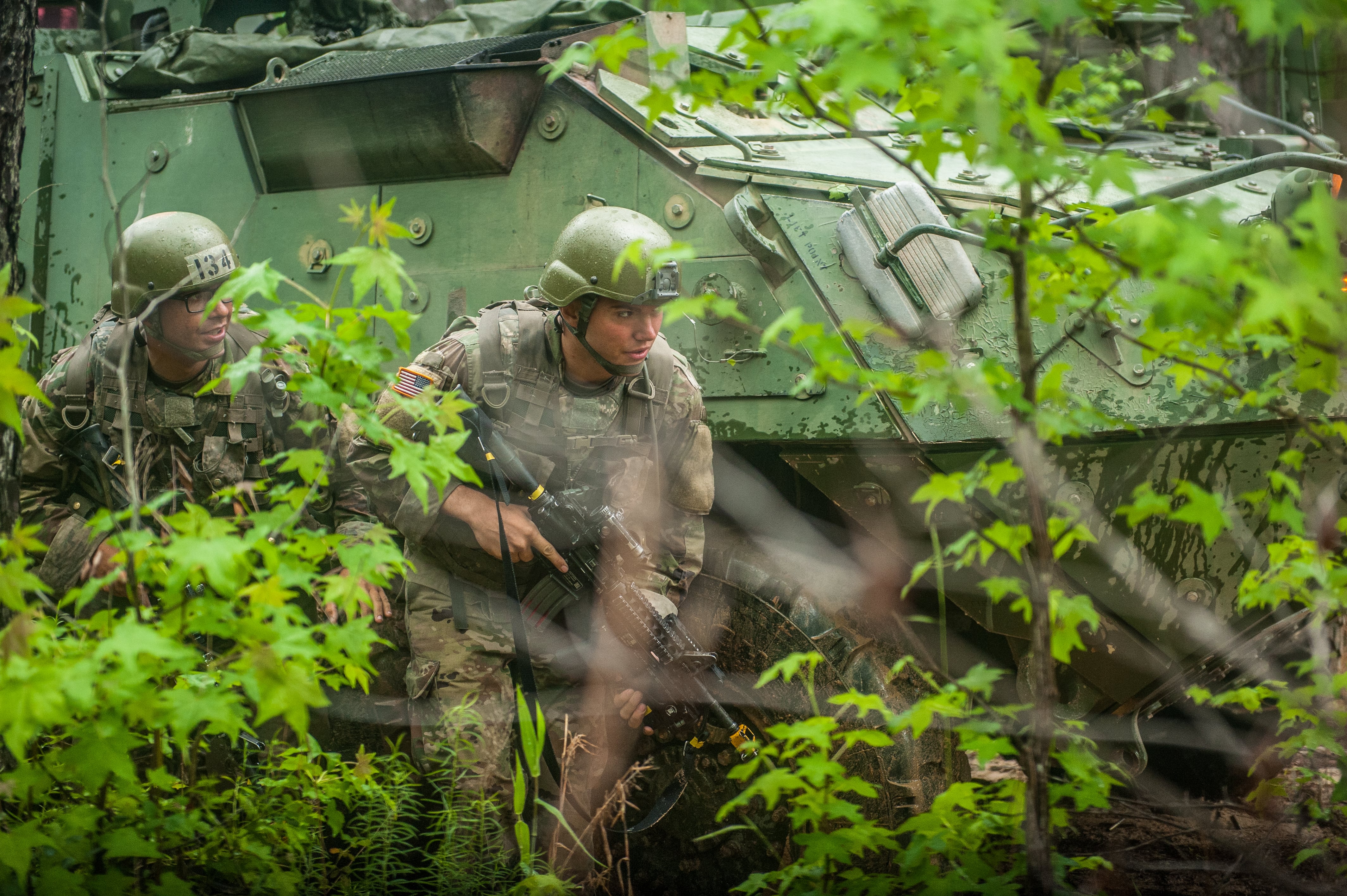When then-Defense Secretary Leon Panetta announced in 2013 that the Defense Department would open all military occupational specialties to women, he gave the services three years to come up with a plan.
Not only would the Army have to figure out the logistics of integrating troops in austere environments, officials would have to study the physical and psychological impacts of men and women living and fighting alongside each other.
“Affording females the opportunity to serve in combat arms now, which was not done before, is not as simple as pulling the switch and allowing that to happen,” Sgt. Maj. Mark Thompson, a senior counselor with the Army G-1, told Army Times in February.
And then, there was the changing of dynamics: There was no doubt that the Army could recruit women for these combat arms jobs, but in order to ensure their success, leaders decided that incoming privates would need a cadre of female officers and noncommissioned officers to be mentors and role models for both men and women.
The result: the Leaders First initiative.
Some female NCOs were immediately motivated to switch MOSs as soon as the combat exclusion was lifted.
Others came on board after seeing a traveling presentation put on by some of the Army’s top sergeants major.
“In the past year alone, we’ve recruited more women than in the past decade: 14,000,” Sergeant Major of the Army Dan Dailey told Army Times in July. “I have 400-plus young women right now who have signed up for combat arms.”
It’s more than they originally expected, officials have said. By late last year, more than 300 women had been recruited or transferred into infantry and armor, according to an Army release.
As of Aug. 22, according to G-1 spokesman Lt. Col. Randy Taylor, there are 38 female infantry officers, 51 female armor officers, 224 female enlisted infantrymen and 142 cavalry scouts and armor crewmen in the Army.
The road show
Before the Army could start sending female recruits through infantry and armor training, there needed to be female cadre in place. So, the G-1 put together a game plan for getting the word out about the opportunities that were opening to female soldiers for the first time.
Thompson and his team traveled the Army, where they first met with platoon sergeants and junior officers.
“We briefed the leaders first because it was important for them to understand that, ‘Hey, we’re getting ready to bring in all your female soldiers and tell them they have the opportunity to do this,’” he said. “But in order to do that, they have to subsequently ask for permission from their command to go to training.”
Then they filled auditoriums with soldiers who were sergeants and below, who watched a three-minute video on the history of integration before a slideshow presentation on how to switch into one of the newly-opened MOSs.
“Keep in mind, these soldiers already have an average of two years in the Army, so they’ve got a general idea of what those MOSs entail,” Thompson said.
Their next step would be to visit a career counselor, who could take their experience and interests and point them toward the best-fitting combat MOS.
“If you like long walks, ruck marching, then light infantry would be for you. Or cavalry scout,” Thompson said. “If you really like being in vehicles, then maybe go into armor, into tanks. It’s really that conversation that the servicing career counselor has with the soldier.”
The team started in September 2016 with the most populated installations. Fort Hood, Fort Bragg, camps throughout Korea, both posts in Hawaii and throughout Germany were first.
They also hit Forts Campbell, Drum, Stewart, Carson, Bliss, Meade and Joint Base Lewis-McChord, as well as Fort Leonard Wood.
The sergeant major of the Army tapped now-retired Sgt. Maj. Tamara Gregory, then the senior enlisted adviser to the Army assistant secretary for manpower and reserve affairs, to deliver the message to female soldiers.
“At one point, I briefed 1,700 in Hawaii at one time,” she told Army Times in March. “The level of interest was definitely out there.”
‘I would’ve done it’
Seeing the armor and infantry MOSs open to women held special significance for Gregory, she said, because as a younger human resources specialist, she had tried to go infantry on her own.
She was assigned to Fort Benning, Georgia, at the time, and was feeling incredulous about all the time she was spending in the field, doing grunt stuff with the grunts.
“What I decided I was going to do, being the smart HR person I was, I put in a [DA form] 4187 to be an 11B,” Gregory said. “Now, granted, my commander didn’t find that funny. But I was like, you know, ‘I’m going to the field a lot more than infantry people are, so I want that MOS.’ So, I would’ve done it.”
Instead, Gregory went on the road to get the word out to her young battle buddies.
“When I was at Fort Riley, there was an infantry sergeant major that came up to me and he had three females with him that were medics,” she recalled, who were interested in going infantry. “This sergeant major made sure to come up to tell me … that these women can do the job, and these three females wanted to.”
For her, she said, getting out the word about Leaders First was her way of encouraging women to take advantage of opportunities she never had.
RELATED
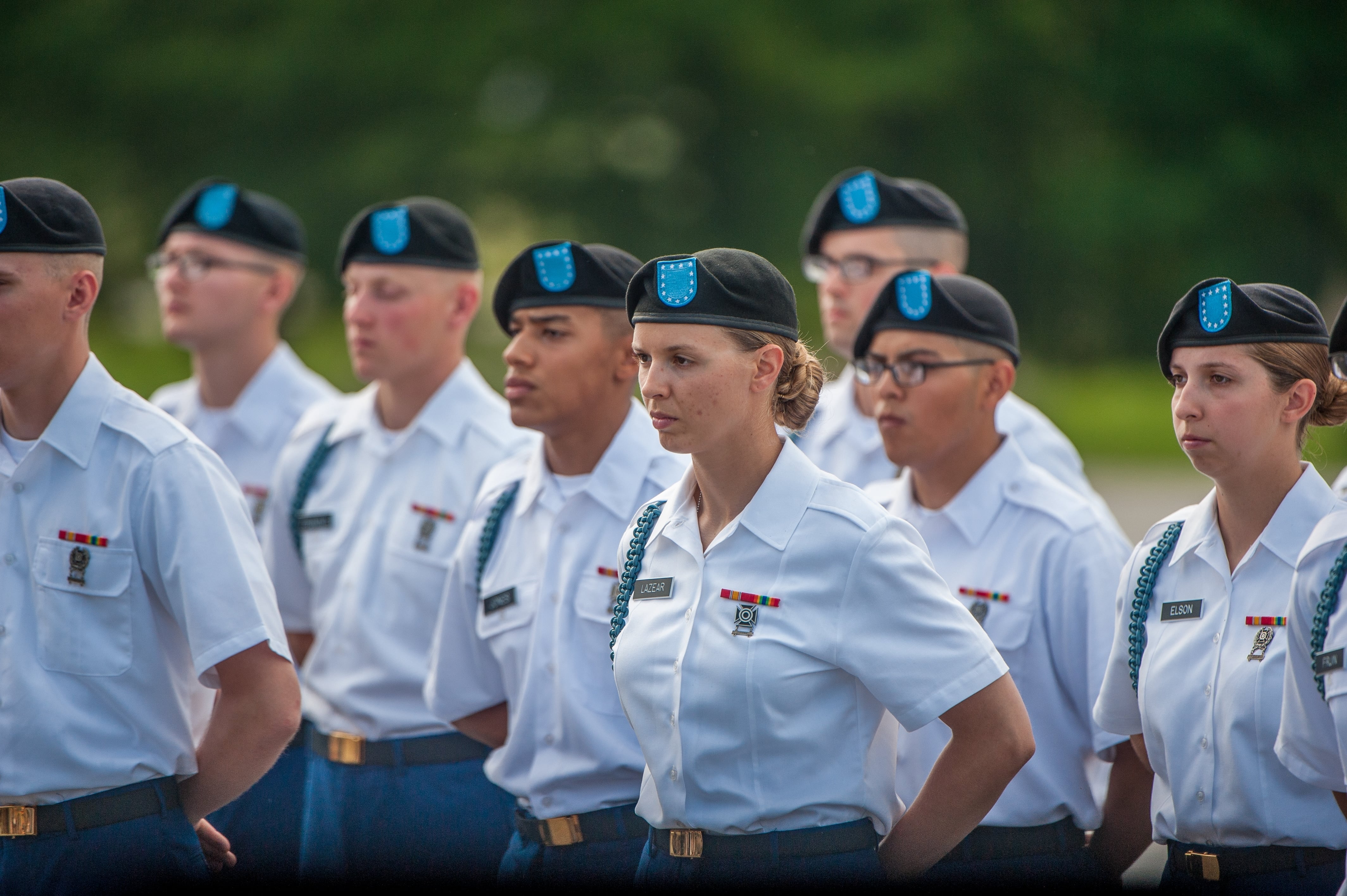
“They are very lucky that they have this opportunity,” she said. “There are women like myself, or at my rank, that wish that we would’ve had this opportunity in order to make a difference for, not only women, but in the Army. To set a standard for young women coming in.”
Gregory retired this spring after 31 years in uniform.
‘The first’
Though the Leaders First presentations didn’t roll out until later in the year, there were women seeking out jobs in the infantry and armor as soon as the ban lifted in January 2016.
“We were talking about it in the beginning of 2016, as a thing that was actually happening,” Sgt. Shelby Atkins, 26, a Wyoming National Guardsman, told Army Times in June. “I remember talking to one of the other females in my unit, saying ‘Hey are you going to go do it?’ ‘I don’t know, are you going to go do it?’ ”
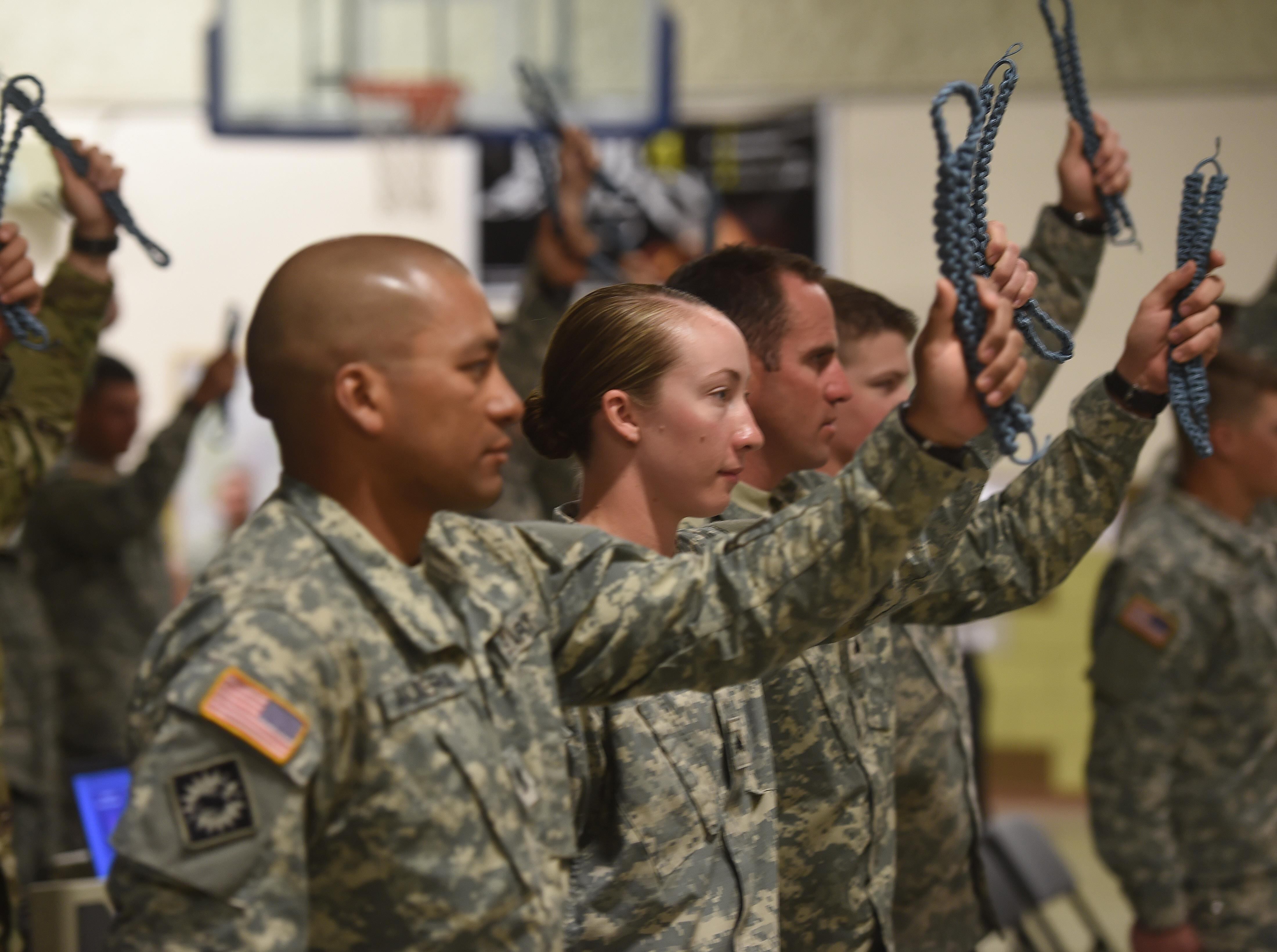
Atkins, then a heavy equipment operator, had decided she wanted to ride in vehicles instead of walk, she said. That is until her readiness NCO, during a deployment to Tunisia, told her that she’d make a good infantryman.
“We got back from that trip, and a couple days later he gave me a call and said, ‘Hey, you still want to go infantry?’” she said. “I don’t know when I ever said I wanted to do that.”
But she decided to try it out for a weekend, when an infantry unit in Cheyenne invited her to their drill.
“Nobody ever said anything to my face about, ‘You don’t belong here,’ or ‘You shouldn’t do it,’” she said.
Still, when she returned to her unit for drill the following month, she was offered an E-6 position, which would keep her in the engineer company.
“So I picked the promotion,” she said. “Then I went to a funeral honors course, and the entire time I was there I was thinking, ‘I made the wrong choice.’”
As soon as she could, she went back to her unit and asked her command sergeant major if she could take it back — she wanted to stay an E-5 and change her MOS to 11B.
“I knew how big of a decision it was, and I wanted to be there for the future female generations that came into the Army,” she said. “And be there to mentor them, mostly just to show the guys in that infantry unit that it’s not going to suck to have a female alongside them.”
RELATED
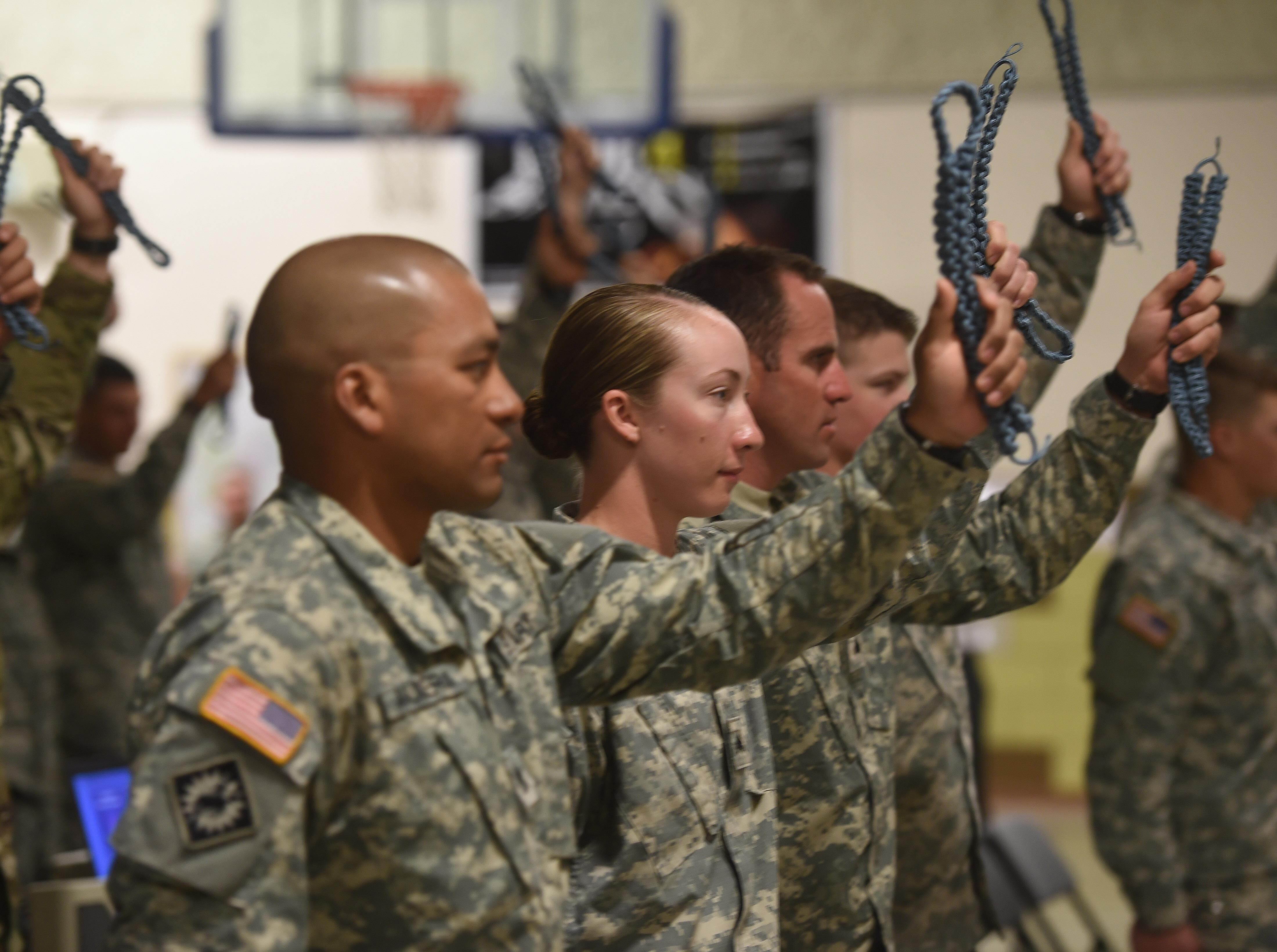
She finished the MOS qualification course in March 2016, becoming the Army’s first female enlisted infantry soldier.
Her experience has been largely positive, she said, and having come from an engineer unit that was 90 percent male, she doesn’t mind being in the minority.
“I was kind of worried about that, but there was only one guy ever who was a huge d-ck to me,” she said. “The next drill we did, we did a huge ruck march, and I kept up with him the entire time.”
If you ain’t cav ...
Much has been made of bringing women into the hallowed brotherhood of the infantry, but that wasn’t the only MOS to begin accepting women in early 2016.
Over in the armor corps, another Guard soldier took a crack at becoming one of the Army’s first female cavalry scouts. Staff Sgt. Erika Stormont, 28, joined the Oklahoma Guard just after turning 18, as a vehicle driver.
“My recruiter told me it was the closest to combat I’d see in my career,” she told Army Times in August, specifically because her gender disqualified her from direct-combat jobs.
But when she got to Kandahar, Afghanistan, in 2010, even her MOS couldn’t get her in the fight.
“I was supposed to be [a mine-resistant ambush-protected vehicle] driver,” she said. “When I got there, I was the only female, and they were like, ‘No way. You’re not going to be on the MRAP team.’ ”
She spent that deployment coordinating helicopter missions, she said, disappointed to be driving a desk.
But in late 2015, word got around that the Army would be opening its last male-only jobs to women.
“Honestly, when I first saw it, I was like, ‘That’s a bad idea,’ ” she said. “I didn’t think that females would ever really be accepted into combat arms, and you would just be constantly proving yourself. Even in a support position, I always felt like I was having to prove myself to have an equal opportunity.”
But then something shifted.
“I wasn’t going to be able to stop it from happening. It was going to happen no matter what,” she said. “And I felt like, if it was going to happen, I wanted to support and make a difference.”
So, she read up on the infantry and armor MOSs, lighting up when she read the description of a cav scout — being the eyes and ears of a tank unit, with the information she fed to the command directly affecting movement decisions.
“I was like, oh my gosh — that sounded like the coolest job I’d ever researched,” she said.
Like Atkins, she added, she’d already had the experience of being vastly outnumbered.
“Being in that position overseas, there wasn’t another female in my office. I already felt separated because of my gender,” she said. “And I felt like, if that’s how it is in combat arms, I’ve already done it.“
And as an E-6, she added, she now had the rank and experience to push back against bad attitudes.
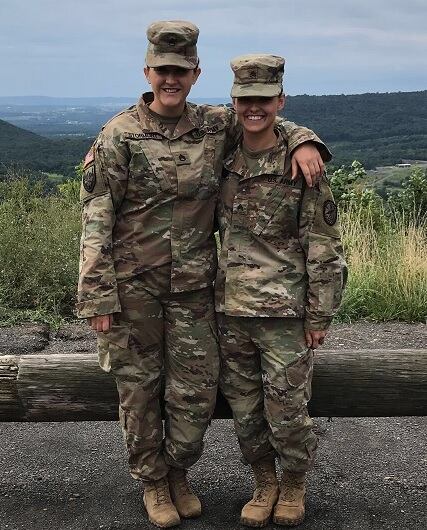
In early 2016, Stormont was attached to 1st Squadron, 180th Cavalry Regiment, and her platoon asked the women in the unit if they’d like to shadow the scouts.
“I was like, ‘I don’t want to shadow – I want to do it,’ ” she said.
She joined 1-180th’s Bravo Troop last spring, where she said she was “welcomed with open arms.”
Despite any hesitation from the women who are already serving, the Army now has more than 400 women serving in those combat jobs.
Dozens of women graduated the first integrated one station unit training classes earlier this year, and hundreds more were slated to join classes throughout 2017.
All told, since the MOSs opened, a total of 519 have joined the Army with infantry or armor contracts.
“I just look at it as, I’m a soldier, I’m there to do soldier things,” Atkins said. “I’m not trying to stand out because I’m female.”
Meghann Myers is the Pentagon bureau chief at Military Times. She covers operations, policy, personnel, leadership and other issues affecting service members.
